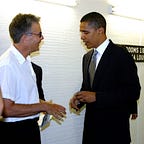The author (glasses, center in second row of orchestra) at a rehearsal with Bernstein, 1988
CANCELLING A MASTERPIECE
West Side Story is certainly taking a beating these days. It turns out that it wasn’t a meticulously researched documentary about the Puerto Rican experience in 1950s New York City, and more than a few academics seem to find this unforgivable. The latest broadside comes in the New York Times, courtesy of Yarimar Bonilla, the director of Centro, the Center for Puerto Rican Studies at Hunter College, and a professor of anthropology at the City University of New York Graduate Center. (https://www.nytimes.com/2021/12/15/opinion/west-side-story-remake.html)
Ms Bonilla’s approach is rather novel, in that she seems to make it a point of pride that she never saw the original musical or the film made from it 60 years ago. She tells us, “All I knew is that it somehow involved gang members dance-fighting and singing about how much they loved America.” Well, no, actually. They don’t sing about how much they love America. America, the song that she is apparently referring to, is a masterpiece of ambivalence and cynicism. The second line of Stephen Sondheim’s lyrics read “Everything free in America/For a small fee in America.” Furthermore, Jerome Robbins’ choreography of the song makes it clear that the immigrants singing it regard their new home as a two-faced and violent place. It is not exactly “Proud to be an American”.
But this is a quibble. There is a much more significant blind spot. She doesn’t seem to grasp that West Side Story is a musical. They are called musicals for a reason and it is astonishing that Ms. Bonilla can write an essay about West Side Story and not say a word about the music. Leonard Bernstein’s music is miraculous from beginning to end, a fact that Ms. Bonilla somehow managed not to notice when she deigned to watch the new Spielberg film.
Allow me to dissect just one musical number, the song Cool, or more specifically the ensuing dance sequence deriving from it. Bernstein sets it as a fugue, a musical form dating from centuries before involving a recurring idea introduced repeatedly by different voices (or instruments) imitating each other. It is a form that reached its apex at the time of Bach, and was more than two centuries out of date when Bernstein got the notion to put it in a Broadway show.
He updated his fugue with a guided tour of the history of classical music. To begin with, the idea he treats with fugal techniques is a clear reference to a work from 1826, Beethoven’s monumental Grosse Fugue for string quartet. But he alters Beethoven’s idea so that he goes through all 12 pitches in our Western tuning system — all the white and black keys on the piano in a single octave — in the course of his sinuous melody. He borrowed this so-called twelve tone procedure from Arnold Schoenberg’s Second Viennese School, which enjoyed its heyday nearly a half century before Cool.
And yet Cool does not sound remotely anachronistic. It is utterly of its own time, a show-stopping dance number redolent of the jazz of the era from which it came, brilliantly employing vibes and drum riffs steeped in that genre.
Every time I hear Cool I am awed and exhilarated once again by it, as indeed I am by all the music in West Side Story. I am quite confident that it will be providing sustenance to audiences as long as people have ears to listen to it, long after both Ms. Bonilla and I are forgotten.
